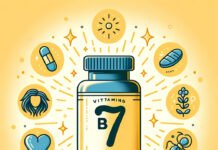High cholesterol? What symptoms does it produce? Discover how to easily lower it by following a healthy diet and certain simple and above all natural tips that will positively help you.

The cholesterol is a chemical generated internally by the liver, and that in itself is necessary for the proper functioning of certain hormones, digestive ácigos and body structures.
There are two classes of cholesterol or lipoproteins that make up its structure. Those popularly known as bad cholesterol (LDL) and good cholesterol (HDL).
On these we must know that LDL cholesterol is deposited in the arteries, thus increasing the different coronary risks, while HDL removes cholesterol from the arteries.
What does it mean to have high cholesterol?
The total intake of fat per day should not represent more than 30% of the total calories ingested, but of these only 10% should be represented by saturated fat.
Hypercholesterolemia is diagnosed when total cholesterol levels exceed 200 mg/dl.; Or also when LDL levels are higher than 130 mg / dl. Or those of HDL are less than 35 mg / dl. In men and 40 mg / dl. In women.
Cholesterol is essential for our body. But high or very high levels can be very dangerous, especially when it comes to LDL cholesterol.
Having high cholesterol, and having no remedy to lower it, means that we are at risk of it causing important and serious health problems, such as cardiovascular disease or arteriosclerosis. In fact, having a lot of bad cholesterol can increase your chance of having a stroke, heart disease, and other related problems.
We must also take into consideration that those people who are smokers, with high blood pressure, with problems of both diabetes and obesity, enhance the damaging capacity of bad cholesterol.
What would be the consequences of keeping it high and not lowering it?
If in some blood tests we have been diagnosed with cholesterol above what is considered “normal”, and we do nothing to lower it, over time its consequences for our health can be quite dangerous. Namely:
- Arteriosclerosis: due to the obstruction of the veins due to cholesterol, restricting the correct circulation of blood both to our heart and to the rest of the body.
- Stroke: as a consequence of the lack of blood supply to the brain. It is very dangerous as it can cause death.
- Angina pectoris: due to the lack of blood supply to a part of the heart. It occurs above all when some kind of effort is carried out, progressively disappearing when we rest.
- Coronary heart disease: it can end in a heart attack.
Symptoms of high cholesterol
There is no doubt that if there is a healthy way to prevent the onset of cardiovascular diseases that is without a doubt knowing the different symptoms of high cholesterol that can help us in a very positive way.
Although it is true that high cholesterol levels tend not to cause clear symptoms for a very long time, especially since it is generally a silent problem that can affect a person for years without them knowing that they have high fat levels in the blood, Yes, certain symptoms of high cholesterol can be identified:
- Swelling of extremities.
- Agitation when we move.
- Loss of balance and dizziness.
- Chest pain.
- Headache.
- Blurry vision.
- Heart attack caused by narrowing of the coronary arteries.
- Stroke caused by a blood clot.
As we can see, the best way to prevent the possible consequences of high cholesterol levels is to enjoy a healthy life, based on following a healthy and balanced diet, as well as practicing physical exercise every day or at least three times a week.
It is also essential to perform a blood test once a year if we do not have any associated pathology, and every six months if we do. Do not forget that prevention is extremely important.
What foods are dangerous? Which Causes High Cholesterol?
There are a series of foods that, in themselves, are especially harmful to our body, which increase the levels of cholesterol in the blood.
They are fundamentally:
- Foods rich in saturated fat: red meat, lamb meat, pork, cold cuts (ham, sausages, bacon), hamburgers, crustaceans, animal butter.
- Industrial pastries: muffins, cakes, donuts and buns, sweets, sweets and trinkets, cookies …
- Junk food in general: hamburgers.
- Certain oils: palm oil and coconut oil.
- Salty snacks : especially chips, nachos with cheese, fried nuts, crackers …
- Whole dairy products: whole milk, mature cheeses, creams… Also avoid butter and margarine.
- Certain sauces: such as mayonnaise or ketchup.
Find out how to easily lower high cholesterol:
Follow a healthy, natural and balanced diet
- Choose especially for foods low in saturated fat or cholesterol.
- Avoid fried foods. It is better to opt for olive oil or vegetable oils, such as soy, sunflower or corn.
- Add foods rich in fiber to your diet, which will help us lower high cholesterol. Among these, we can highlight cereals and whole grains, oats, rice, vegetables and fruits, legumes and vegetables.
- Use skim or skim milk (instead of whole).
- Limit your consumption of eggs to 3 or 4 per week.
Get regular physical exercise
Physical exercise is essential when it comes to enjoying good health. In addition, it positively helps in keeping our blood fat levels at bay. The best? Practice at least 40 minutes of physical exercise every day, especially aerobic exercise since it slightly increases the heart rate: walking briskly or quickly, running, swimming, riding a bike. Choose from your favorite, you will see how in a short time you LDL cholesterol will be dramatically reduced (including triglycerides as well). Remember, the most important thing is not the intensity, but the duration of physical exercise.
Avoid tobacco
Did you know that tobacco, although it is true that it does not increase cholesterol levels, is capable of reducing HDL (or good) cholesterol? For this reason, it is advisable to reduce the number of cigarettes you smoke daily, until you are able to completely eliminate it from your day to day.
Are you overweight? In this case reduce it
When high cholesterol is accompanied by excess weight, a suitable option that helps in a very positive way to reduce its levels is to lose weight. We must bear in mind that obesity increases LDL cholesterol levels on the one hand, while on the other it tends to reduce HDL cholesterol. A useful option to reduce your weight is to exercise regularly, eat a balanced, low-calorie diet, and eat fewer amounts of food per day (that is, eat fewer calories than you actually consume based on your daily physical activity).
And how to increase good HDL cholesterol?
Choose above all for the following foods:
- Oils: choose to include olive oil and sunflower oil in your diet, but without cooking them so that they do not lose their virtues and properties.
- Nuts: eat a handful (around 25 grams) of certain nuts each day, such as walnuts, almonds and peanuts (yes, natural and never fried).
It also highlights the practice of regular physical exercise, which not only reduces bad LDL cholesterol, but is also capable of increasing good cholesterol levels. As we indicated before, the best exercise is aerobic exercise.
Diet for high cholesterol
When both cholesterol and triglyceride levels appear high in routine tests, it is necessary to opt for a diet for high cholesterol, which helps lower these figures.
It goes without saying that, as many experts believe, the most advisable thing to do from the outset is to try to maintain a healthy life, with a balanced diet rich in fruit and vegetables, and to practice physical exercise on a regular basis.
Below we offer you an example of what an ideal diet could be to reduce high cholesterol levels, opting for foods that help to achieve it.
Breakfast
- Skimmed yogurt with muesli.
- Green tea or red tea.
- An orange juice or a glass of skimmed milk with decaffeinated coffee.
Lunch
- A skimmed yogurt.
- An apple or a handful of walnuts.
Meal
- Cooked vegetables with boiled artichoke.
- Grilled blue fish or chicken breast.
- A curd or an apple.
Afternoon snack
- A cup of green tea.
- A handful of almonds or walnuts.
Dinner
- Asparagus with baked tomatoes (or a salad or serving of boiled vegetables).
- Cream of mushrooms or grilled turkey breast.
- Whole meal bread.
- Skim milk or an infusion.
As we have seen throughout this note, and as we discussed in the previous section, the key is to opt for foods low in fat, especially foods of natural origin, which provide us with essential nutrients and are low in fat.































